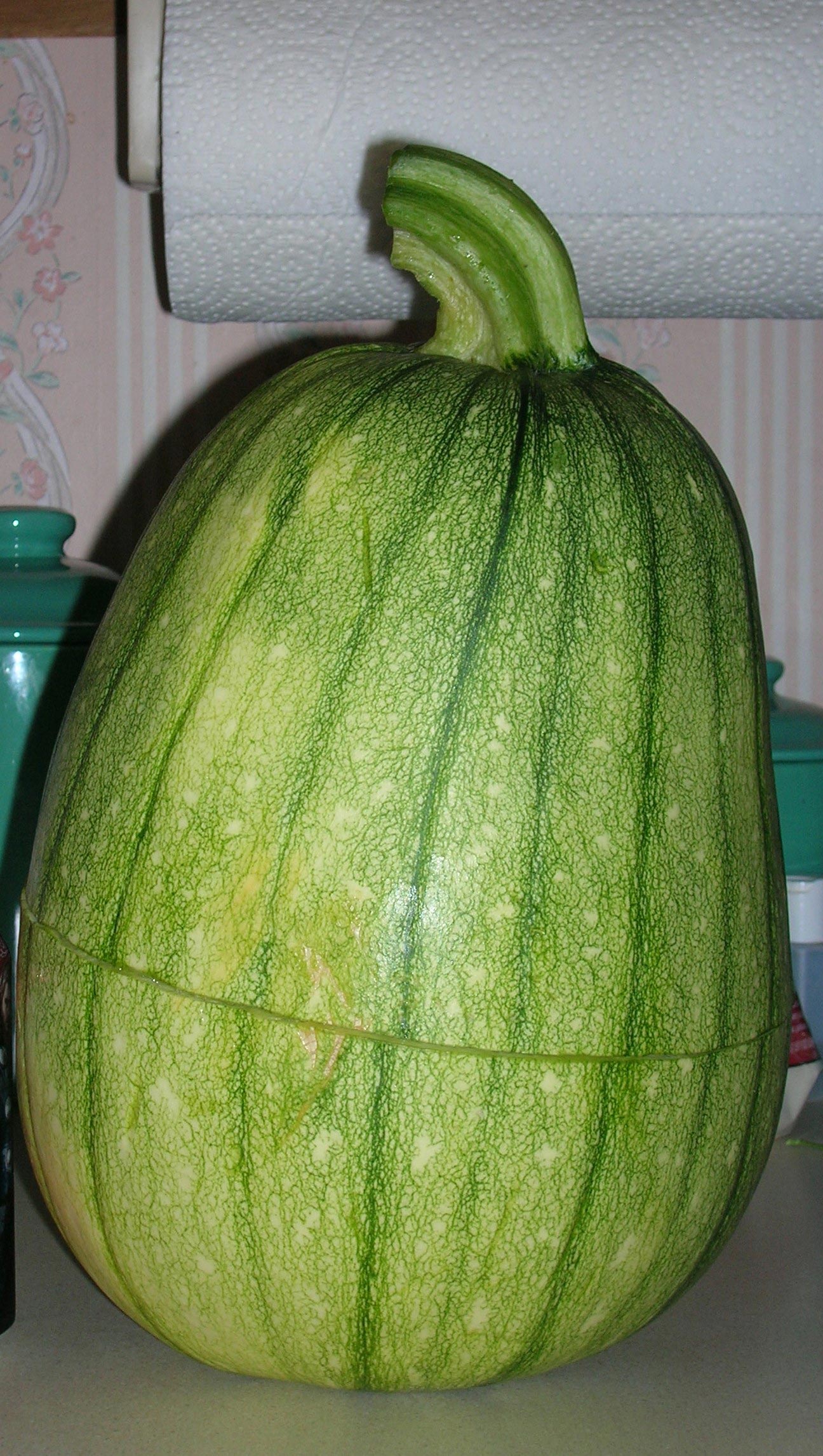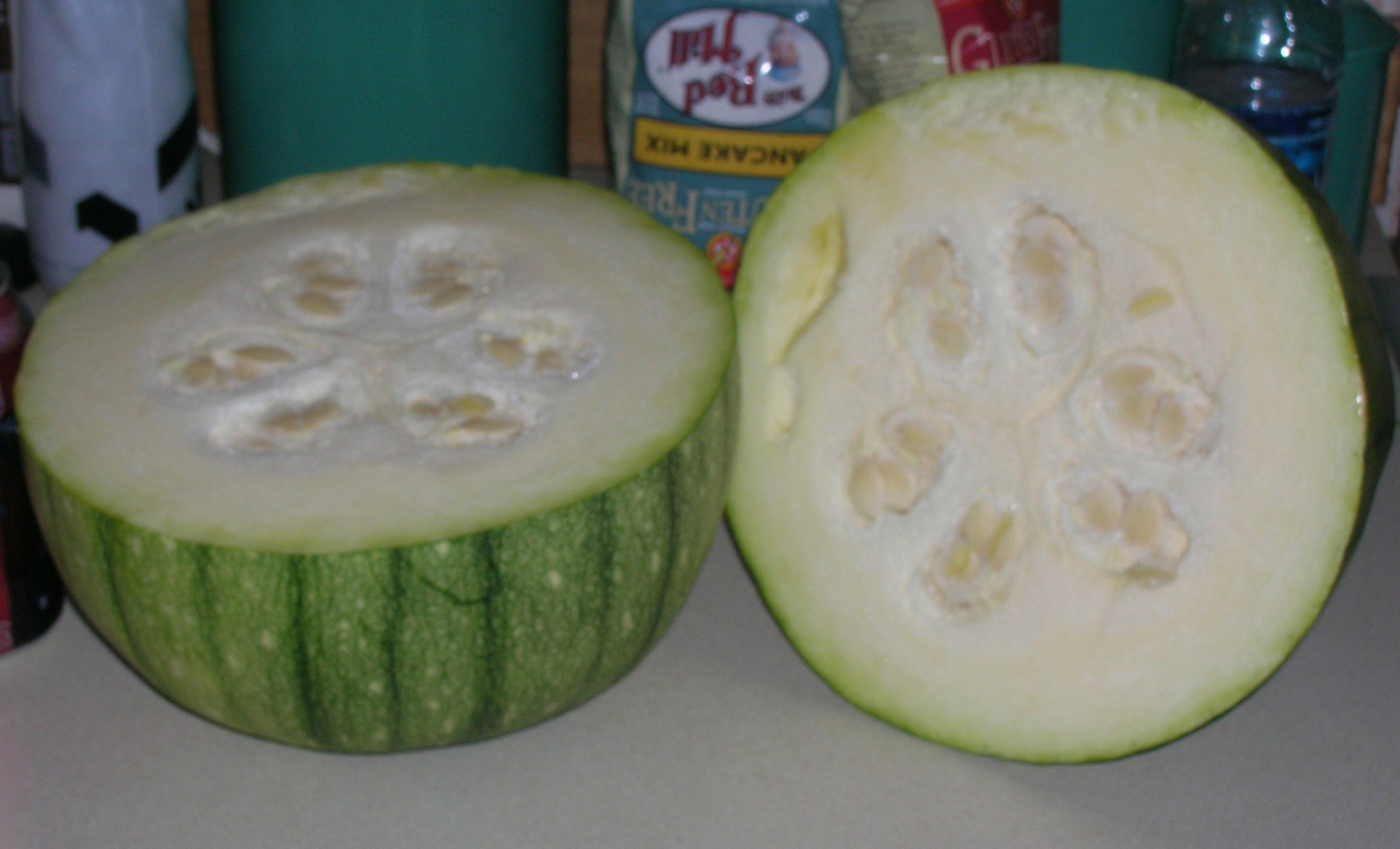Squash/Pumpkin/Cucumber/Watermelon Cross-Pollination – Explanation

I frequently receive from gardeners pictures of crazy-looking squash, cucumbers and gourds. Typically the plants sprouted in a compost pile, from discarded fruit of the past year.
The gardeners suspect cross-pollination is to blame for the odd shapes and they wonder if the fruit is edible. I’m sure you can eat any of these fruit but I can’t guarantee how they will taste (probably not so good). But identifying the parents of these squmpkins or gourchini or cuculoupes is almost impossible because these vining crops, while similar, are famously sexually discriminatory.
Here is my explanation of how it works:
Plants belonging to the Cucurbitaceae family produce separate male and female blooms on the same plant. Insects are usually required to cross-pollinate blooms.
Even plants that cross pollinate do not affect each other’s taste in the current year. Only the offspring next year will be affected.
Pumpkins and squashes do not cross-pollinate with cucumbers, watermelons or citron.
Watermelons and citron both belong to the same genus: Citrullus and, therefore, will cross-pollinate each other.
Muskmelon, cantaloupe and Casaba melons will cross since they are both in the genus Cucumis and in the same species melo.
When you start talking about cross pollination between squashes and pumpkins, things get a bit hairy. Squashes and pumpkins belong to four species of the genus Cucurbita. Some exchange pollen readily and some don’t.
To make all this easier to understand, plant experts have divided the Cucurbitaceae family into groups. Members of the same group pollinate each other.
Group A Cucurbita pepo:
Summer squash
Yellow crookneck or straightneck
Zucchini, Cocozelle
Scallop/patty pan
Winter Squash
Acorn
Spaghetti
Gourds
many ornamental types.
Many Pumpkins including Cinderella, Big Tom, Jack O’Lantern, Jackpot, Small Sugar, Sugar Pie and Connecticut Field.
Group B Curcurbita moschata
Winter Squash
Butternut squash
Pumpkins
Cheese
Dickinson Field
Golden Cushaw
Kentucky Field
Group C Cucurbita maxima
Winter squash
Hubbard
Pumpkins
Big Max
King of the Mammoths
Mammoth Chile
Mammoth Prize
Atlantic Giant
Ornamental squash
Alladin
Turk’s Turban
Group D Cucurbita mixta
Pumpkins
Green-Striped Cushaw
Japanese Pie
Tennessee Sweet Potato
White Cushaw
Mixta Gold
Group E Cucumis sativus
All slicing and pickling Cucumbers (except Armenian cucumber):
Beit Alpha cucumber
Lemon cucumber
Group F Cucumis melo
Cucumbers
Armenian (Snake cucumber or Serpent melon)
Melons
All muskmelons
Casaba
Honeydew
Group G Citrullus lanatus
All watermelons
All citron melonfs






















